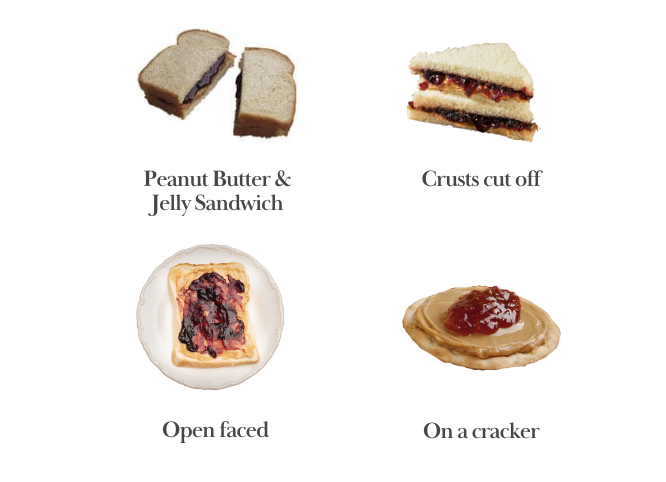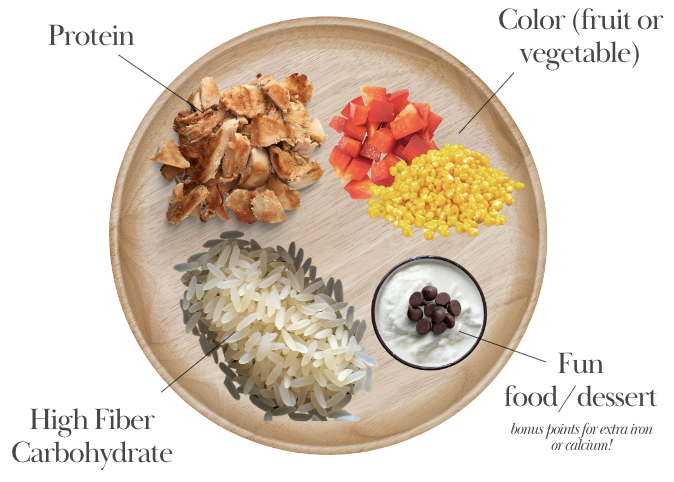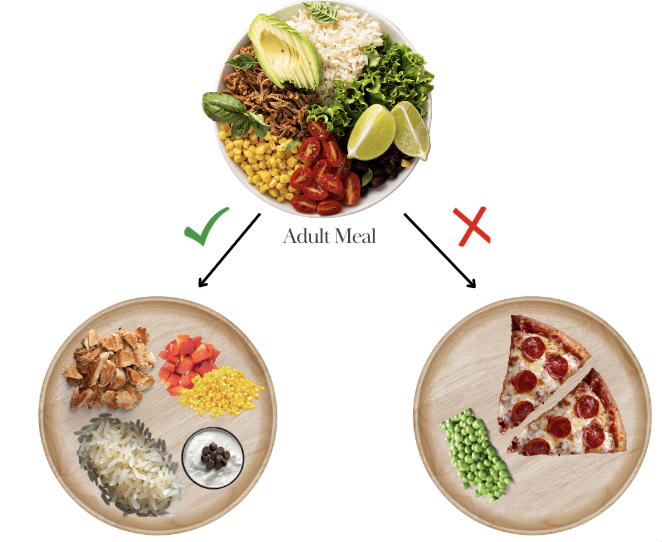Picky eating can be overwhelming and challenging no matter your child’s age. Many parents want to avoid this challenge altogether. I commonly get questions like
“How can I prevent picky eating?”
“What causes picky eating?”
“What are early signs of picky eating?”
I love these questions because they are rooted in creating a healthy relationship with food BEFORE any problems begin. As a pediatric dietitian, I am all about giving kids the foods they love AND attempting to make meals as nutrient-dense as possible.
I find that if parents only focus on one or the other – nutrition OR flavor – picky eating can be the result. But the answer is yes – we CAN prevent picky eating to some extent!
So let’s review some well-researched tips and tricks:
1. Avoid Serving Foods the Same Way

The root of this issue is that kids desire consistency. They thrive off of structure. New experiences are often overwhelming and uncomfortable for children. It’s no different with food!
They want to be able to anticipate how a food will taste or expect a certain flavor each time they eat it.
However, as a parent, you know that food VERY often tastes different than the last time you ate it. For example, this week’s grapes are sweeter than last week’s, this restaurant’s bread is different than the one at home, some chips are saltier than others, etc. Food tastes different even if it’s the same food!
This could be a catalyst for picky eating. If kids get accustomed to foods tasting the same every time, they start to prefer highly processed food. For example, not all blueberries taste the same but all fruit snacks do!
And if their meals are not consciously adjusted to show the natural variations of textures and flavors in foods, kids can become more and more selective.
However, switching up the way a meal is served doesn’t mean you need to have an endless amount of different recipes and meal ideas. It just means putting a small spin on a current favorite! The entire goal is to normalize food variety. This can be achieved in a number of different ways:
- Using a different brand
- Cutting the food differently (using a cookie cutter, cutting off the crust, serving the food cut in half)
- Use a non-processed version (ground peanut butter, yogurt mixed with fruit rather than buying pre-flavored)
- Dis-assemble the food (open-faced sandwich, yogurt parfait with each ingredient separately)
- Combine foods that haven’t been combined previously (peanut butter dollop on each apple slice, chocolate chips on top of yogurt, hummus already placed on crackers)
To learn more about this method, check out my other post all about food chaining.
2. Consistently Serve a Balanced Plate (even if they don’t always eat it all!)

A well-balanced plate is one of those suggestions that sound good in theory, but often gets ignored. The top reasons I see parents not consistently serving a balanced plate are kids’ food preferences, attempting to be cautious of food waste, or lack of time to prepare meals.
However, the key is repeatedly giving them examples of a balanced diet. This sets an expectation and baseline for how to make a meal that is both nutritious and filling. And further, how their relationship with food will be formed. One day when they have more autonomy with their food choices, they will be more likely to subconsciously create a balanced meal.
Plus, foods that are consistently offered are more likely to be eaten. So even if they aren’t eating every food group at every meal, the repeated structure of the meal and repeated exposure to foods is the important part.
3. Avoid “Kid Meals” Being Different than “Adult Meals”

This one is SO easy to fall into. This is the idea of having a “kid-friendly meal” despite the rest of the family eating something else. And the intentions are good in this one! You want your kid to feel comfortable at the dinner table and actually eat during meal time.
However, the issue with this is that a “kid-friendly menu” often becomes very repetitive. Extreme repetition can condition a child to prefer a lack of variety.
Nonetheless, I can understand that not every “adult meal” is extremely appealing to kids. In some circumstances, there might be WAY too many “new foods” to introduce to a child all at once. Here are some tips on adjusting your adult meals to make them more kid-friendly
- Break the meal down into its individual components. For example, if the adults are eating tacos for dinner, offering each food individually is less overwhelming and a little more inviting to a child!
- Continue to serve a “safe food”. If the meal you are eating includes many foods that your child has little experience with, try including one of their “safe foods” to everyone’s meal. For example, if you are trying out a new recipe, incorporate your ki’s favorite food into the side dish.
- Calm down on the spices. A child’s palette is much less complex than ours. To make our foods enjoyable to children (especially at first introduction), keep it neutral with the flavors and add your own seasonings after serving.
These tips should help address the common reasons why families do not offer a “set menu”. However, avoiding the “kids meal” sets kids up for a wider variety in their diet for the rest of their life!

Great ideas!
Pingback: Food Chaining: Examples & How-to - The Pediatric Dietitian